Little Steps Class 4 Notes Physical Education Chapter 4 Free PDF
| Table of contents |

|
| Introduction |

|
| What Are Little Steps? |

|
| Games and Activities |

|
| Body Parts Used |

|
| Safety and Rules |

|
Introduction
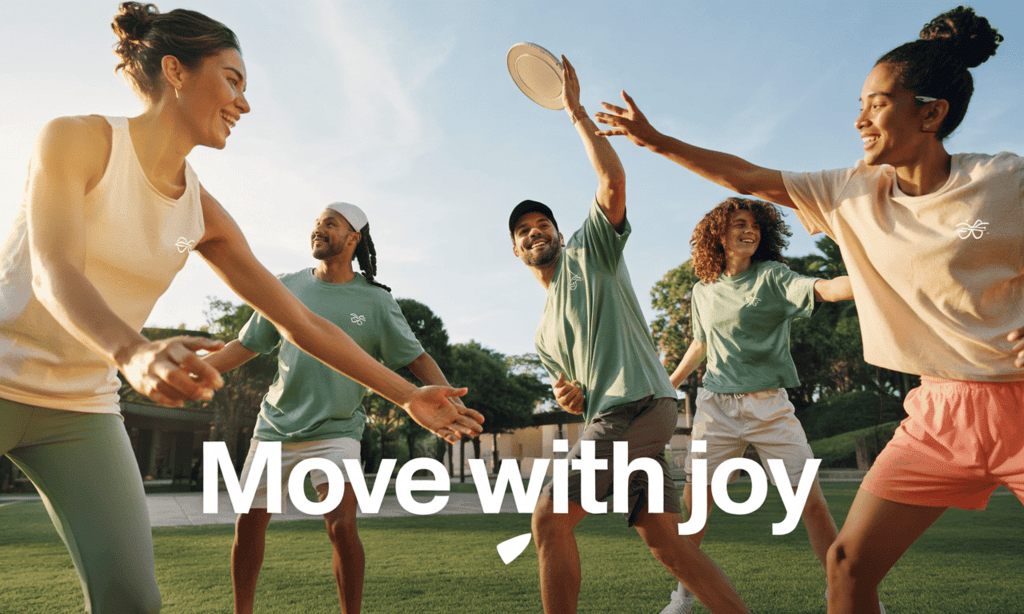 Playful Fitness
Playful Fitness
- The chapter “Little Steps” focuses on learning how to move the body in various ways through small, careful, and controlled movements.
- These movements help children enhance their balance, posture, rhythm, and coordination. Just as we learn to walk before we run, we take little steps before mastering larger movements.
- This chapter includes playful activities that make learning enjoyable while promoting fitness.
What Are Little Steps?
Little steps include different movements that build body awareness and coordination. They are performed in various patterns, speeds, and directions, helping us control our bodies better. Examples are: tiptoeing, hopping, slow walking, and sliding steps.
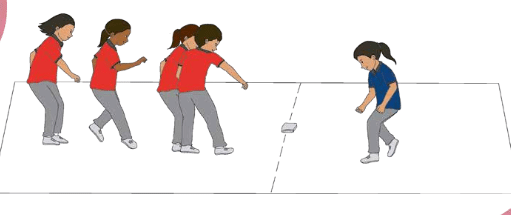
- They improve body control and balance.
- They teach safe movement in small spaces.
- They keep our bodies flexible and active.
- These steps are used in many games, sports, and dances.
Types of Movements
| Movement Type | Description | Benefits |
|---|---|---|
| Walking | Taking one step after another | Improves balance and posture |
| Tiptoe Walk | Walking on the front of your feet | Strengthens feet and calves |
| Hopping | Jumping on one foot | Builds leg strength and coordination |
| Jumping | Both feet leave the ground together | Helps in rhythm and fitness |
| Side Stepping | Moving sideways | Improves flexibility and direction control |
| Heel-to-Toe Walk | One foot’s heel touches the other foot’s toe while walking | Improves balance and focus |
Games and Activities
These games and activities are designed to help students practice and enhance their balance, strength, and coordination in an enjoyable and interactive way. They focus on improving motor skills, agility, and teamwork, while promoting physical fitness and perseverance.
1. Roll Around: This activity helps develop balance by rolling your body from side to side while holding your ankles.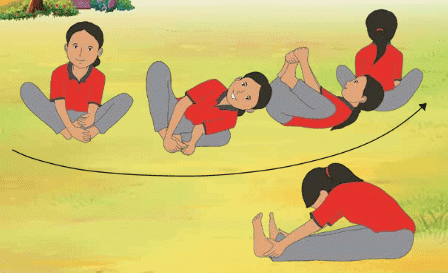 Roll Around
Roll Around
How to Play:
Sit on the ground, holding both ankles and tuck your chin to avoid injury.
Roll your body sideways, alternating between the left and right side.
As you progress, stretch your legs while holding your ankles.
- Purpose: To develop balance in rolling motion.
- Variations: Try forward rolling or change the rolling direction.
2. Cross Together: In this team-based activity, students use hula hoops to create a path and bring a piece of cloth back, fostering collaboration.
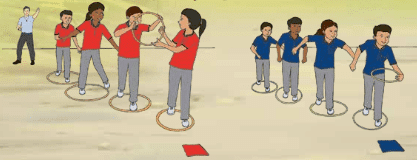
How to Play:
Form teams of four, each with a hula hoop. Place one hoop in front and the rest in hand.
One teammate places the hoop on the ground and moves into it, passing it to the next teammate.
Teams must bring a piece of cloth back to the start by placing and moving the hoops along the path.
- Purpose: To develop team spirit and collaborative skills.
- Variations: Adjust the number of hula hoops or teammates.
3. Movement Circuit: A fun circuit with different physical activities designed to improve motor skills, balance, and overall fitness.
- How to Play: Students perform different activities at each station: walk on a 9-inch path, perform frog jumps, T-balance, and more. Complete each station and then continue the circuit with a forward roll and sprint.
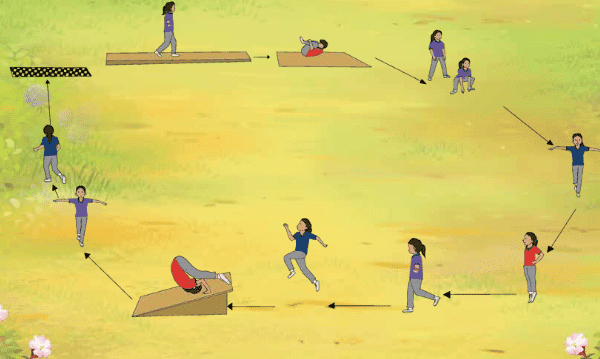
- Purpose: To develop basic motor movements and fitness.
- Variations: Change the sequence or frequency of exercises to adjust difficulty.
4. Push Circuit: A strength-building activity that involves pushing against walls, boxes, and performing push-ups to develop upper body strength.
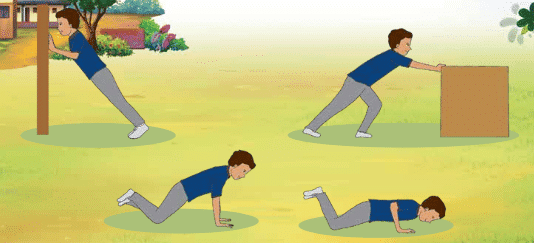
How to Play:
Begin by holding a push against a wall on toes for one minute.
Continue with pushing and pulling against a box and performing knee push-ups.
- Purpose: To develop upper body strength.
- Variations: Adjust the duration of holds or the weight of the box.
5. Leg Circuit: This circuit focuses on building lower body strength through exercises like squats, lunges, and vertical jumps.
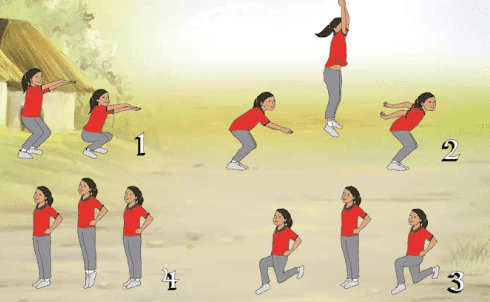
- How to Play: Perform squats, vertical jumps, lunges, and calf raises in sequence to complete the circuit.
- Purpose: To develop lower body strength.
- Variations: Change the number of repetitions or do calf raises on one leg.
6. Run into Hula Hoops: A fast-paced game where students run, jump, and find a hula hoop when the whistle blows, improving agility and listening skills.
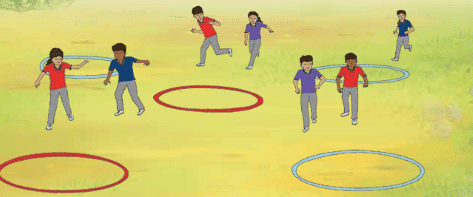
- How to Play: Run or jump around the area, avoiding the hula hoops. When the whistle blows or music stops, find a hula hoop to stand in.
- Purpose: To develop agility and auditory senses.
- Variations: Change exercises, vary the number of hula hoops, or assign colors to each student.
7. Balancing on the Line: Students practice balance and coordination by walking along a path, jumping into hoops, and hopping between lines to reach the finish.
- How to Play: Walk the path while balancing your body. Jump with one leg onto a box or hoop, hop to the next line, and continue balancing to the finish.
- Purpose: To develop balance and coordination.
- Variations: Adjust jump types, walking patterns, or distance between stations.
Body Parts Used
| Body Part | Role in Movement |
|---|---|
| Feet | Main part for stepping and walking |
| Legs | Provide strength and support |
| Arms | Help with balance during movement |
| Eyes | Help us see where we are going |
| Ears | Assist with balance and following instructions |
Safety and Rules
- Always play in a clean, safe area.
- Wear comfortable shoes.
- Keep space between each other to avoid bumping.
- Listen carefully to the teacher’s instructions.
- Don’t rush—move slowly and carefully.
FAQs on Little Steps Class 4 Notes Physical Education Chapter 4 Free PDF
| 1. What are the main themes covered in the Little Steps Class 4 curriculum? |  |
| 2. How can parents support their children in the Little Steps Class 4 program? |  |
| 3. What are some activities included in Little Steps Class 4 to enhance learning? |  |
| 4. How is student progress assessed in Little Steps Class 4? |  |
| 5. What resources are recommended for Little Steps Class 4 students to enhance their learning? |  |














